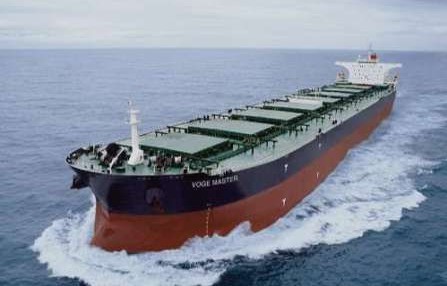Panama: Safety concerns over expanded canal could undermine economic advantages

The construction of the Panama Canal’s third set of locks is hoped to significantly improve the cost efficiency of trade between Asian markets and the east coasts of the US and Latin America. The new locks will allow the canal to accommodate vessels up to 13,000 twenty foot equivalent units (TEUs), up from 4,400 TEUs previously, including the vast 12,000 TEU-plus “neo-panamax” containerships. As much as 79 percent of global cargo-carrying capacity will be able to access the canal, up from 45 percent previously, saving neo-panamax-class vessels up to 14 days transit time on round trips. The state-owned Panama Canal Authority (ACP) predicts the expansion will generate annual revenues of USD 2.1 bn, or 2.8 percent of GDP.
Safety and disruption concerns
Despite the huge advantages offered by the canal’s expansion, there have been growing concerns over safety issues associated with the introduction of neo-panamax vessels along the waterway. Industry bodies have warned that at 427 m long and 55 m wide, the new locks are too small for the neo-panamax. The largest vessels can measure up to 366 m long and 49 m wide, leaving a distance of just 6 m across the width of the canal and 61 m length-wise, much of which will be taken up by tugboats on either end of the vessel to guide it through the lock. A joint study by the International Transport Workers’ Federation (ITF) and Brazil’s Fundação Homem de Mar (FHM) found that under windy conditions the manoeuvrability of vessels would be compromised, making accidents likely due to the lock’s narrow dimensions.
Further concerns have been raised over the structural integrity of the locks after cracks appeared in the Cocoli lock during the testing phase in August 2015. Anonymous structural engineers cited in the New York Times said the cracks were likely a result of sub-standard pouring methods as a core sample of the lock showed air gaps in the concrete, which, they claimed, would require the lock to be demolished and rebuilt, a measure that would have bankrupted the expansion project. The ACP has denied the claims, blaming the cracks on insufficient reinforcement, which it said had been resolved with more steel bars and additional concrete.
The prospect of an accident involving such large vessels and cargo loads presents significant financial risks for shippers and insurers. An accident would also impose indirect costs as a result of delays to scheduled transits through the canal. Insurance agency Allianz Global Corporate & Specialty released a report in June 2016 which estimated that the expansion will see an additional USD 1.25 bn worth of insured goods pass through the canal in a single day, based on the average value of USD 20,000 per TEUs. The report called on shippers and insurers to take active risk mitigation measures to assess and spread the impact of an accident involving a neo-panamax vessel, as a single event could result in much larger losses than typically seen in the shipping industry.
Additional concerns
Additional risks of disruption along the route stem from the potential for industrial action by canal workers. Construction workers from the Grupo Unidos por el Canal (GUPC) and National Union of Workers in the Construction Industry (Untraics) staged regular strikes during the nine-year construction of the canal, over a wide range of issues including pay, changes to labour law and allegations of corruption during the construction, contributing to the two-year delay in completing the expansion. With construction work on the canal now complete, the highest risk of strike action is from workers operating the canal. In light of safety issues over the new locks, any accident resulting in employee casualties is likely to spur industrial action. Furthermore, the largest union in Panama, Suntrac, has organised work stoppages over government policy, unrelated to the ACP, indicating a willingness to strike over national issues beyond the authority’s control.
The cost-savings associated with the introduction of neo-panamax vessels could be compromised by draft restrictions imposed during droughts along the canal. In 2015 and 2016, the ACP imposed increasingly stringent draft restrictions on vessels, decreasing the permitted distance from the waterline to the bottom of the hull and forcing many vessels to lighten their load to comply with the measures. In April 2016 the ACP reduced the maximum draft by 15 cm and by the same amount again in May 2016. Such measures undermine the competitive advantage of the canal if they require post-panamax vessels to significantly lighten their load. With water consumption in Panama increasing and additional water diverted to expand the locks, such shortages are expected to remain a major issue.
Outlook
The success of the expansion of the Panama Canal is partly dependent on how the ACP manages and mitigates such risks through training and its response to the emergence of any safety and structural vulnerabilities. Encouragingly, the ACP has taken a cautious approach to the new locks, initially permitting four vessels per day during an initial trial period before increasing the canal’s maximum capacity to 13-14 transits per day, although a timescale for the increase has not yet been established. Any major safety failings, a fall in water levels or evidence of damage to the locks, however, would create significant pressure on the ACP to implement restrictions on the locks, with implications for larger vessels and a negative economic impact on the authority and its revenues.
Source: PGI – Intelligence
HEADLINES
- Do shipping markets want Biden or Trump for the win?
- All 18 crew safe after fire on Japanese-owned tanker off Singapore
- Singapore launching $44m co-investment initiative for maritime tech start-ups
- Cosco debuts Global Shipping Industry Chain Cooperation Initiative
- US warns of more shipping sanctions
- China continues seaport consolidation as Dalian offer goes unconditional